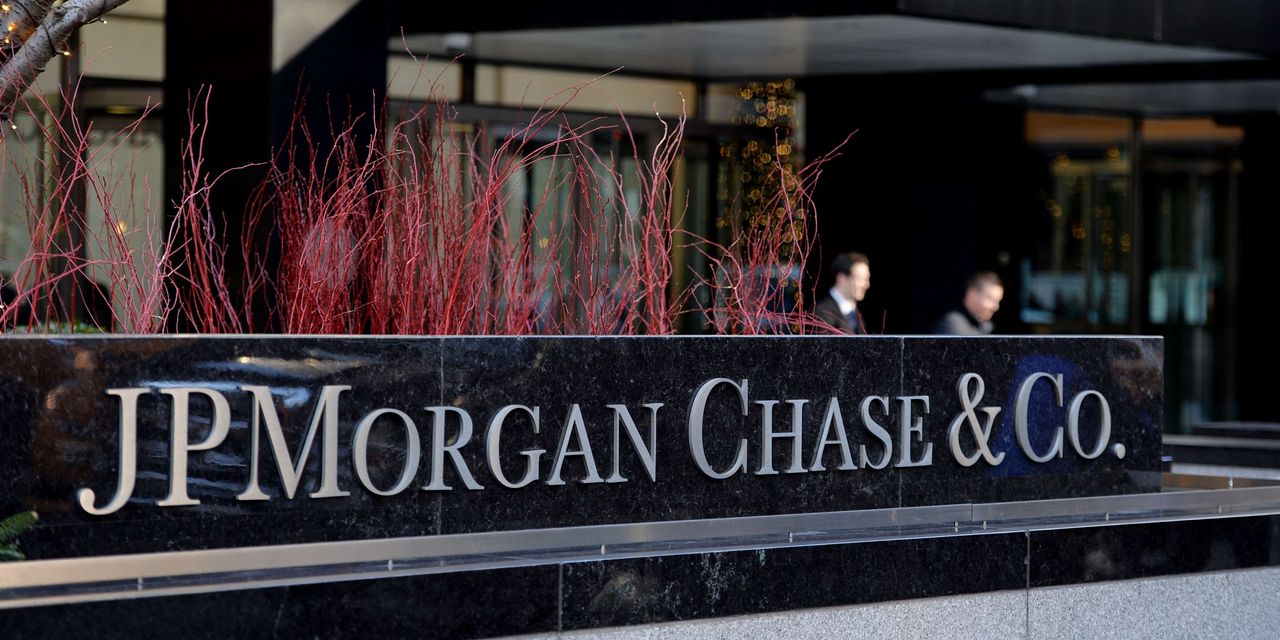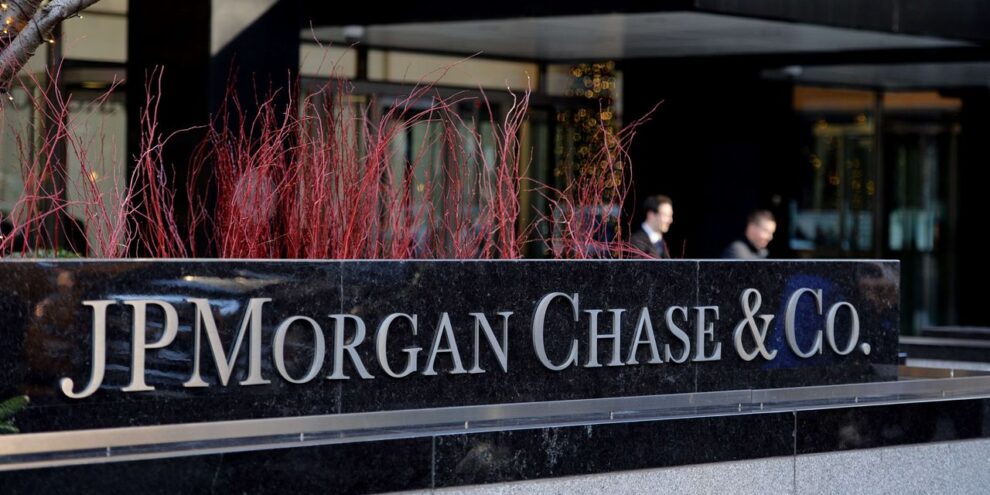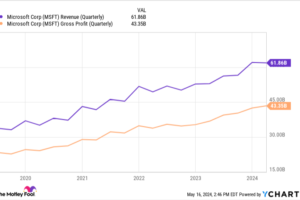
U.S. stocks ended sharply lower Friday, erasing early gains that attempted to build on a bounce in the previous session that marked what’s been called one of the craziest market days in history.
Stocks turned lower after a closely-watched survey showed consumer inflation expectations were on the rise, while investors also weighed results from big Wall Street banks as earnings reporting season gets under way.
How major U.S. stock indexes traded
- The Dow Jones Industrial Average DJIA, -1.34% fell 403.89 points, or 1.3%, to close at 29,634.83, after rising 390 points at its session high.
- The S&P 500 SPX, -2.37% shed 86.84 points, or 2.4%, to finish at 3,583.07.
- The Nasdaq Composite COMP, -8.89% tumbled 327.76 points, or 3.1%, to end at 10,321.39, its lowest closing value since July 2, 2020, according to Dow Jones Market Data.
For the week, the Dow rose 1.2%, while the S&P 500 fell 1.6% and the Nasdaq dropped 3.1%, according to Dow Jones Market Data.
What drove markets
Inflation concerns weighed on the U.S. stock market Friday.
Gains early Friday gave way to losses after the University of Michigan’s consumer sentiment survey showed expectations for inflation over the next year rose to 5.1% from September’s one-year low of 4.7%, while expectations for inflation over the next 5 years ticked up to 2.9% from 2.7% last month.
“That’s definitely a negative for markets,” said Dave Grecsek, Aspiriant’s managing director in investment strategy and research, in a phone interview Friday. “If we continue to see more increases in inflation expectations, that’s a very concerning development for the Fed,” which has been battling the surging cost of living with aggressive interest rate hikes, he said.
“Once people expect higher inflation, it becomes much more entrenched and it affects behavior,” said Grecsek. “People start purchasing more today because they feel like prices are only going to get higher tomorrow,” making the Fed’s job “a lot harder.”
The stock market was also being weighed down by Thursday’s consumer-price-index report, which showed inflation rose in September more than anticipated, according to Grecsek. Equities initially tanked Thursday before staging a rally likely fueled by technical drivers such as “short covering,” he said, as the “fundamental information” from the CPI report was “poor” in that it indicated stickier inflation.
“It’s possible that prior to the widely feared CPI report, investors hedged their portfolios and scrambled to cover their shorts when the market dropped on the bad news,” Yardeni Research said in a note Thursday. “That forced unhedged shorts to cover too, resulting in a reversal day.”
Rick Rieder, the chief investment officer for fixed income at BlackRock, told MarketWatch that Thursday’s gyrations marked one of the “craziest” days in market history, coming after data showing U.S. September inflation running at a hotter-than-expected pace.
Analysts have cited a number of factors to explain the huge bounce in stocks on Thursday, including technical and positioning considerations after a steep selloff that had seen the S&P 500 index tumble for six straight sessions to end Wednesday at its lowest since November 2020.
“Among the most frequent explanations is that the most pessimistic of all possible scenarios were built into prices: a 75-point rate hike at the next two meetings,” said Alex Kuptsikevich, senior market analyst at FxPro, in a note. “After this, market participants turned their attention to substantial discounts to prices from their highs with a relatively healthy economy that continues to create jobs and raise wages.”
See: Why stocks scored a historic bounce after another hot inflation report
But caution still prevailed on Friday.
“Despite October’s notoriety as a ‘bear market killer’ and an auspicious intraday move, investors should maintain a certain degree of caution. A real change in trend requires a shift in fundamentals. And those changes are still not easy to identify,” Kuptsikevich said.
BlackRock’s Rieder has advised investors to consider parking their money in short-term bonds, a point recently echoed by hedge-fund legend Ray Dalio.
Read: ‘This is not QE or QT. This is none of those.’ Why the U.S. Treasury is exploring debt buybacks
“The uptick in inflation expectations probably is a response to the increase in gas prices in recent weeks, in which case it won’t continue,” said Ian Shepherdson, chief economist at Pantheon Macroeconomics, in a note, observing that preliminary readings from the University of Michigan survey tend to see big revisions.
“Still, on the heels of the September inflation data this rebound — reversing the drop last month — does not look good, given how closely policy makers appear to track the measure,” Shepherdson said.
The Fed needs to continue raising interest rates to fight inflation but should be careful about the pace of these moves, Kansas City Fed President Esther George said on Friday.
Brent Schutte, chief investment officer at Northwestern Mutual Wealth Management Co., expressed concern over the damage the Fed’s aggressive rate hikes risks inflicting on the U.S. economy.
“I still think we’re going to have a recession that will be mild,” unless the Fed “keeps its foot on the pedal” in terms of its aggressive pace of rate increases, Schutte said in a phone interview Friday. “If they keep going, they will eventually cause a deeper recession.”
In economic data released Friday, a U.S. Census Bureau report showed retail sales were unchanged in September, coming in below forecasts for a 0.3% rise.
“Goods spending is weakening without a doubt,” said Schutte. “You are seeing a dramatic slowdown overall.”
Meanwhile, the University of Michigan survey’s gauge of consumer sentiment rose to 59.8 in October from 58.6. But “it’s still incredibly low,” said Schutte.
Investors also assessed earnings results from Wall Street banks, including JPMorgan Chase & Co., Wells Fargo & Co. WFC, +1.86%, Morgan Stanley MS, -5.07% and Citigroup Inc. C, +0.65% Shares of JPMorgan JPM, +1.66% finished 1.7% higher after the bank and Dow component beat Wall Street targets for earnings and revenue.
See: JPMorgan profit falls but beats estimates while Wells Fargo misses
Companies in focus
- Wells Fargo WFC, +1.86% shares rose 1.9% after the bank posted stronger-than-expected revenue for the third quarter, offsetting a profit miss.
- Shares of Morgan Stanley MS, -5.07% dropped 5.1% after the investment bank missed Wall Street’s targets for earnings and revenue amid a drop in deal activity.
- Citigroup C, +0.65% shares edged up 0.65% after the bank topped Wall Street forecasts on earnings and revenue.
- UnitedHealth Group Inc. UNH, +0.63% shares increased 0.6% after the Dow component and health insurer reported third-quarter profit and revenue that rose above expectations, and lifted its full-year outlook for a third straight quarter.
- Shares of Kroger Co. KR, -7.32% dropped 7.3% after announcing a $24.6 billion deal to buy Albertsons Cos. Inc. ACI, -8.45%. Shares of Albertsons fell more than 8%, after jumping more than 11% Thursday on reports of a potential deal.
- Beyond Meat Inc. BYND, -9.71% shares plunged 9.7% after the plant-based food company issued a revenue warning, announced a plan to cut about 200 workers and said it’s cutting other costs as it makes a strategic shift aimed at achieving positive cash flow operations.
—Steve Goldstein contributed to this report.
















Add Comment